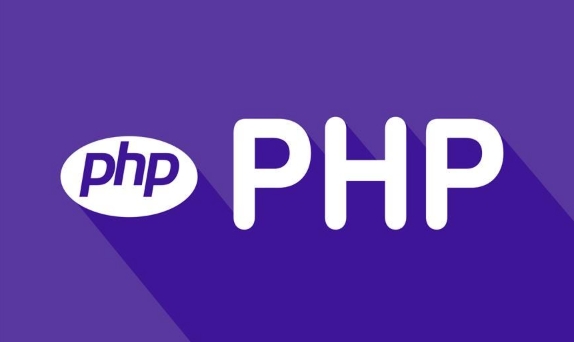There are key differences between CLI PHP and Web PHP in configuration files, execution environments, error handling and usage scenarios. 1. Different configuration files, CLI usually uses /etc/php/8.x/cli/php.ini, while Web PHP uses such as /etc/php/8.x/apache2/php.ini, resulting in inconsistent settings such as display_errors; 2. Different execution environments, CLI runs on end users, and Web PHP runs on web server users (such as www-data), affecting permissions, environment variables and input and output methods; 3. Different error handling methods, CLI displays detailed error information by default, and Web PHP may record errors in logs rather than displaying them in the browser; 4. Different usage scenarios, CLI is suitable for command-line tasks such as timed jobs and unit tests, and Web PHP is used to handle HTTP requests and service dynamic content.

When you're working with PHP, it's easy to assume that the language behaves the same whether you're running it from the command line or through a web server. But in practice, CLI PHP and Web PHP have some important differences that can affect how scripts behave, what configurations are active, and even how errors are handled.

Let's break down the key distinctions so you know what to expect when switching between environments.
Configuration Files Can Be Different
One of the first things you might notice is that CLI PHP often uses a different php.ini file than Web PHP.

- When you run PHP from the terminal using
php, it typically loads a configuration file like/etc/php/8.x/cli/php.ini. - When PHP runs via Apache or Nginx, it usually uses something like
/etc/php/8.x/apache2/php.inior/etc/php/8.x/fpm/php.ini.
This means settings like display_errors , error_reporting , or memory_limit might be set differently depending on which environment you're in.
? A common gotcha: You might not see errors displayed in the browser because display_errors is turned off in the web version, but it's enabled in the CLI version, so they show up in your terminal.

You can check which config file is being used by running:
php --ini # for CLI
And in a script accessed through the web:
<?php phpinfo();
Execution Context and Environment Variables Vary
CLI PHP runs in a shell environment, while Web PHP runs under the web server user (like www-data ).
This affects:
- File system permissions — scripts may have different access to files and directories.
- Environment variables — some variables available in the shell aren't present in the web context and vice versa.
- User interaction — CLI scripts can read input from the terminal (
fgets(STDIN)), while web scripts rely on HTTP requests.
For example, if you're writing a script that needs to read user input or output progress bars, those features only make sense in the CLI world.
Also, paths can behave differently. Relative paths in web scripts are relative to the document root or current script path, while in CLI, they're relative to where you're running the script from.
Error Handling and Output Are Treated Differently
Error handling in CLI and Web PHP can lead to different behaviors, especially during debugging.
In CLI :
- Errors and notices are usually printed directly to the terminal.
- The default error reporting level tends to be more verbose.
In Web PHP :
- Errors might be logged to a file instead of shown in the browser.
- Settings like
display_errorsandlog_errorsdetermine what happens.
So if a script works fine in the terminal but shows a blank page in the browser, it's likely due to an error that's being suppressed or logged elsewhere.
? Tip: Always check the web server's error log if something isn't behaving as expected. In many settings, it'll be something like /var/log/apache2/error.log or /var/log/nginx/error.log .
Performance and Use Cases Aren't the Same
CLI PHP is great for tasks that don't involve HTTP requests:
- Cron jobs
- Data imports/exports
- Long-running processes
- Unit tests
Web PHP, on the other hand, handles:
- HTTP requests
- Serving dynamic content
- Managing sessions and cookies
Because CLI scripts don't go through the overhead of a web request, they can sometimes perform better for background processing.
Also, timeouts work differently. Web scripts often have a time limit (like 30 seconds by default), while CLI scripts can run indefinitely unless explicitly configured otherwise.
Basically that's it. The difference between CLI and Web PHP seems to be small, but in actual development and debugging, it often brings confusion about "why can't you run in this environment in that environment". Understanding the differences between them can help you troubleshoot problems more efficiently and make more appropriate design choices when writing scripts.
The above is the detailed content of What is the Difference Between CLI PHP and Web PHP?. For more information, please follow other related articles on the PHP Chinese website!

Hot AI Tools

Undress AI Tool
Undress images for free

Undresser.AI Undress
AI-powered app for creating realistic nude photos

AI Clothes Remover
Online AI tool for removing clothes from photos.

Clothoff.io
AI clothes remover

Video Face Swap
Swap faces in any video effortlessly with our completely free AI face swap tool!

Hot Article

Hot Tools

Notepad++7.3.1
Easy-to-use and free code editor

SublimeText3 Chinese version
Chinese version, very easy to use

Zend Studio 13.0.1
Powerful PHP integrated development environment

Dreamweaver CS6
Visual web development tools

SublimeText3 Mac version
God-level code editing software (SublimeText3)

Hot Topics
 What are some best practices for versioning a PHP-based API?
Jun 14, 2025 am 12:27 AM
What are some best practices for versioning a PHP-based API?
Jun 14, 2025 am 12:27 AM
ToversionaPHP-basedAPIeffectively,useURL-basedversioningforclarityandeaseofrouting,separateversionedcodetoavoidconflicts,deprecateoldversionswithclearcommunication,andconsidercustomheadersonlywhennecessary.StartbyplacingtheversionintheURL(e.g.,/api/v
 How do I implement authentication and authorization in PHP?
Jun 20, 2025 am 01:03 AM
How do I implement authentication and authorization in PHP?
Jun 20, 2025 am 01:03 AM
TosecurelyhandleauthenticationandauthorizationinPHP,followthesesteps:1.Alwayshashpasswordswithpassword_hash()andverifyusingpassword_verify(),usepreparedstatementstopreventSQLinjection,andstoreuserdatain$_SESSIONafterlogin.2.Implementrole-basedaccessc
 What are the differences between procedural and object-oriented programming paradigms in PHP?
Jun 14, 2025 am 12:25 AM
What are the differences between procedural and object-oriented programming paradigms in PHP?
Jun 14, 2025 am 12:25 AM
Proceduralandobject-orientedprogramming(OOP)inPHPdiffersignificantlyinstructure,reusability,anddatahandling.1.Proceduralprogrammingusesfunctionsorganizedsequentially,suitableforsmallscripts.2.OOPorganizescodeintoclassesandobjects,modelingreal-worlden
 What are weak references (WeakMap) in PHP, and when might they be useful?
Jun 14, 2025 am 12:25 AM
What are weak references (WeakMap) in PHP, and when might they be useful?
Jun 14, 2025 am 12:25 AM
PHPdoesnothaveabuilt-inWeakMapbutoffersWeakReferenceforsimilarfunctionality.1.WeakReferenceallowsholdingreferenceswithoutpreventinggarbagecollection.2.Itisusefulforcaching,eventlisteners,andmetadatawithoutaffectingobjectlifecycles.3.YoucansimulateaWe
 How can you handle file uploads securely in PHP?
Jun 19, 2025 am 01:05 AM
How can you handle file uploads securely in PHP?
Jun 19, 2025 am 01:05 AM
To safely handle file uploads in PHP, the core is to verify file types, rename files, and restrict permissions. 1. Use finfo_file() to check the real MIME type, and only specific types such as image/jpeg are allowed; 2. Use uniqid() to generate random file names and store them in non-Web root directory; 3. Limit file size through php.ini and HTML forms, and set directory permissions to 0755; 4. Use ClamAV to scan malware to enhance security. These steps effectively prevent security vulnerabilities and ensure that the file upload process is safe and reliable.
 What are the differences between == (loose comparison) and === (strict comparison) in PHP?
Jun 19, 2025 am 01:07 AM
What are the differences between == (loose comparison) and === (strict comparison) in PHP?
Jun 19, 2025 am 01:07 AM
In PHP, the main difference between == and == is the strictness of type checking. ==Type conversion will be performed before comparison, for example, 5=="5" returns true, and ===Request that the value and type are the same before true will be returned, for example, 5==="5" returns false. In usage scenarios, === is more secure and should be used first, and == is only used when type conversion is required.
 How can you interact with NoSQL databases (e.g., MongoDB, Redis) from PHP?
Jun 19, 2025 am 01:07 AM
How can you interact with NoSQL databases (e.g., MongoDB, Redis) from PHP?
Jun 19, 2025 am 01:07 AM
Yes, PHP can interact with NoSQL databases like MongoDB and Redis through specific extensions or libraries. First, use the MongoDBPHP driver (installed through PECL or Composer) to create client instances and operate databases and collections, supporting insertion, query, aggregation and other operations; second, use the Predis library or phpredis extension to connect to Redis, perform key-value settings and acquisitions, and recommend phpredis for high-performance scenarios, while Predis is convenient for rapid deployment; both are suitable for production environments and are well-documented.
 How do I perform arithmetic operations in PHP ( , -, *, /, %)?
Jun 19, 2025 pm 05:13 PM
How do I perform arithmetic operations in PHP ( , -, *, /, %)?
Jun 19, 2025 pm 05:13 PM
The methods of using basic mathematical operations in PHP are as follows: 1. Addition signs support integers and floating-point numbers, and can also be used for variables. String numbers will be automatically converted but not recommended to dependencies; 2. Subtraction signs use - signs, variables are the same, and type conversion is also applicable; 3. Multiplication signs use * signs, which are suitable for numbers and similar strings; 4. Division uses / signs, which need to avoid dividing by zero, and note that the result may be floating-point numbers; 5. Taking the modulus signs can be used to judge odd and even numbers, and when processing negative numbers, the remainder signs are consistent with the dividend. The key to using these operators correctly is to ensure that the data types are clear and the boundary situation is handled well.






